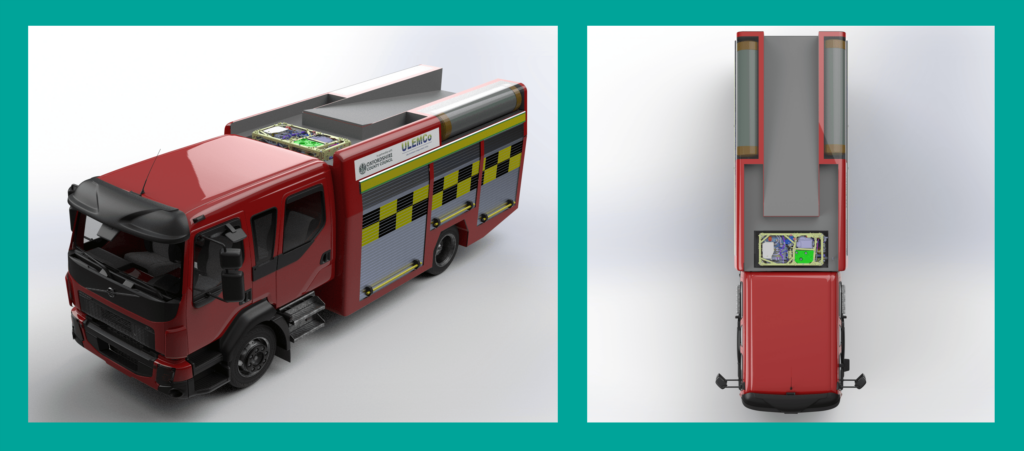Study shows promise for zero-emissions fire engines

(Photos courtesy of ULEMCo)
Research by hydrogen fuel company ULEMCo has concluded that battery-electric fire tenders fitted with hydrogen fuel cells and carrying at least 8 kg of hydrogen fuel will give them the required flexibility, emergency response and water pumping requirements, especially for rural and semi-urban services.
The research was carried out with Oxfordshire County Council and the Oxfordshire Fire Service. The findings apply not only to the deployment of fire engines across all parts of the UK, but to other specialist vehicles requiring significant power take-off in their operations.
Analysis of the real-world energy requirements of fire appliances, including the requirement in EN 1486 for 4 hours of water pumping energy, confirmed that 8 kg of hydrogen with a Toyota Gen2 fuel cell range extender would be sufficient to provide range extension of a 220 kW battery base vehicle. The combination of stored energy in the batteries and hydrogen fuel is needed to ensure the ‘always ready’ rapid response requirements of operations.
A second conclusion from the work is that this onboard energy strategy could be met within existing vehicle designs, and would therefore speed up the potential deployment of zero-emissions vehicles in these types of application.
As part of the study, fire stations in Oxfordshire were assessed and options were proposed for hydrogen refuelling locations that would allow the engines to refuel cost-effectively, as well as providing facilities for the rest of Oxfordshire’s public-sector fleet. The key was finding locations where consolidated demand would be more than 200 kg a day, so that hydrogen infrastructure investors would be able to supply the fuel at a price/kilo similar to existing fuels and ownership cost models.
“The next step for the project is to secure funding to build a prototype fire tender,” said Amanda Lyne, managing director of ULEMCo.
Oxfordshire Council and the fire service are now evaluating the logistics of establishing a hydrogen refuelling infrastructure.
ONLINE PARTNERS































